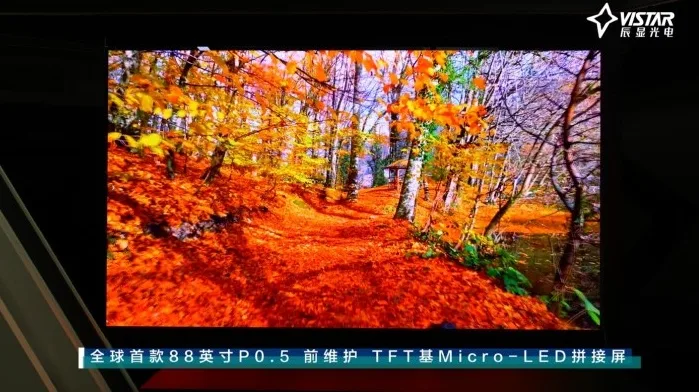In 2023, Vistar broke ground on what it claimed to be the world’s first TFT MicroLED production line. The company said that it was aiming to achieve mass production by end of 2024, initially targeting large commercial displays. It was being touted as a milestone achievement in TFT MicroLED industrialization. Now, the company has announced the fruits of its labor.

TFT MicroLED uniquely merges MicroLED benefits like high brightness and efficiency with TFT backplanes’ scalability and cost efficiencies for driving modular designs. Now, Vistar has lit up an 88-inch TFT MicroLED modular display to show that it is making progress towards its goals. The company is claiming a brightness factor of 1,200 nits, a contrast ratio of 1,000,000:1, 10-bit color depth, and 240Hz refresh rates. It also claims a DCI-P3 99% wide color gamut.
TFT MicroLEDs use thin film transistors made of materials like amorphous silicon, low-temperature polycrystalline silicon (LTPS), or indium gallium zinc oxide (IGZO) as the backplane. This allows for lower cost and larger substrate sizes compared to silicon-based MicroLEDs. The TFT backplane circuitry controls functions like pixel switching, driving current levels to pixels to set gray levels, and implementing pulse width modulation for digital driving. They should be well-suited for large, modular displays for applications like TVs, digital signage, and video walls. The modules can be tiled together to create very large, seamless displays spanning over 200 inches.
Compared to OLEDs, TFT MicroLEDs offer higher efficiency and brightness for the same power budget. They also avoid drawbacks of OLEDs like more complex encapsulation requirements when tiling modules. As MicroLEDs cannot be monolithically fabricated on the backplane like OLEDs, they typically require hybrid approaches like using pick-and-place tools to transfer the separately fabricated LEDs onto the TFT backplane.

